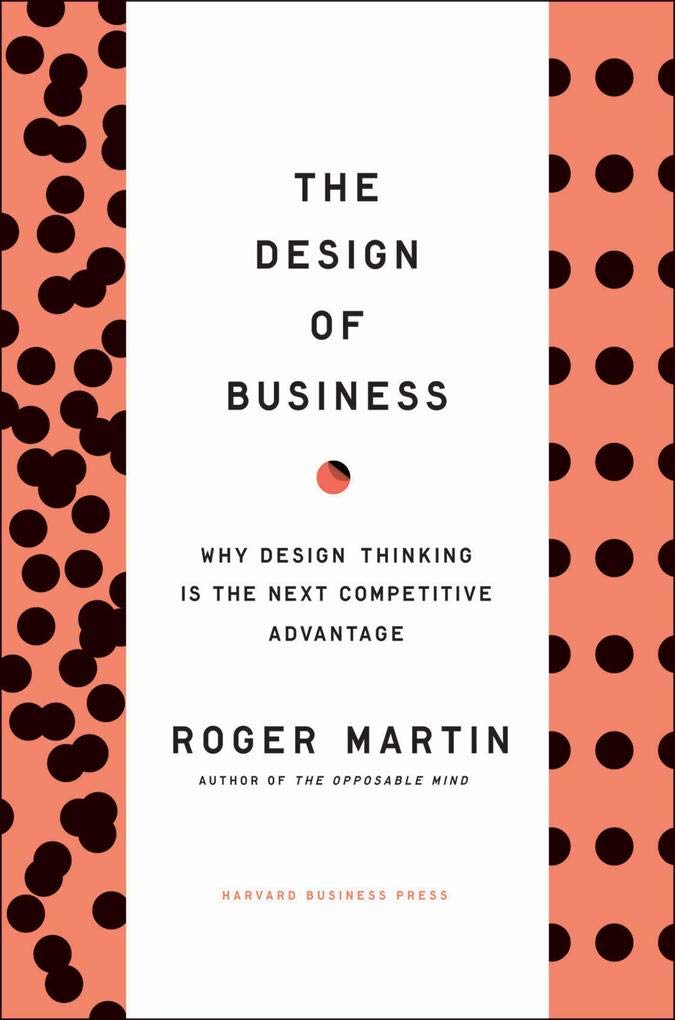
The Design of Business: A Pathway to Innovation and Competitive Advantage
Introduction
In today’s rapidly evolving marketplace, the convergence of business strategy and design thinking is gaining prominence as organizations seek innovative strategies to differentiate themselves from competitors. The Design of Business, a phrase popularized by Roger Martin in his thought-provoking book, emphasizes the integration of design thinking within the realm of business strategy. This review article explores the key themes of Martin’s concept, its implications for organizations, and real-world applications that illustrate its effectiveness in fostering innovation and sustainable growth.
Understanding the Design of Business
Definition and Framework
At its core, the Design of Business posits that effective business practices can benefit from the principles of design thinking. Design thinking is an iterative, user-centered approach that emphasizes understanding the needs of end-users, ideation, prototyping, and testing. Martin’s framework encapsulates this by advocating for a balance between analytical thinking (which focuses on optimization and efficiency) and intuitive thinking (which drives exploration and creativity).
Martin identifies three key components that form the foundation of successful business design:
-
Theories of Business: These are the underlying hypotheses that drive a company’s business model. It includes assumptions about customer needs, how a company delivers value, and the competitive landscape.
-
Design Thinking: This refers to the creative process of generating innovative solutions that address real-world problems. It involves empathy for users, collaboration, and ongoing iteration.
- The Constraints of the Business Environment: Understanding the external factors that can affect a business, such as market trends, regulatory requirements, and technological advancements.
By integrating these components, organizations can foster an environment conducive to innovation while still maintaining a focus on profitability and sustainability.
The Role of Design Thinking in Business Strategy
Design thinking encourages a fundamental shift in how organizations approach problem-solving and innovation. Traditionally, businesses have relied on a linear, analytical process that often leads to incremental changes rather than breakthrough innovations. Conversely, design thinking promotes a more dynamic approach that involves:
-
Empathy and User-Centricity: Prioritizing user experiences and needs can lead to more relevant and effective solutions. Businesses that embrace this mindset can create products and services that resonate more deeply with consumers.
-
Collaboration and Interdisciplinary Teams: Design thinking thrives on collaboration among diverse teams. This amalgamation of different perspectives fuels creativity and leads to innovative solutions.
- Rapid Prototyping and Iteration: Instead of investing heavily in a single idea, design thinking encourages quick prototyping and refinement. This iterative approach allows businesses to test hypotheses and pivot when necessary.
Implications for Organizations
1. Fostering a Culture of Innovation
Organizations that adopt the Design of Business framework often see a transformation in their company culture. When design thinking principles are embedded into the organizational ethos, employees feel empowered to think creatively, experiment, and share ideas freely, ultimately leading to a more innovative environment.
2. Enhancing Customer Connections
By placing emphasis on understanding customer needs, companies can develop products that are not only functional but also delightful to use. This customer-centric approach fosters loyalty and enhances brand reputation, contributing to long-term success.
3. Navigating Uncertainty and Complexity
In an era characterized by rapid technological advancement and market volatility, the Design of Business approach prepares organizations to adapt and thrive in uncertainty. The iterative nature of design thinking allows businesses to be more responsive to changes in customer preferences, technological advancements, and market dynamics.
Real-World Applications
Numerous organizations have successfully integrated the Design of Business principles into their operations:
1. IBM
IBM has leveraged design thinking to transform its product development and client engagement processes. By reorienting its approach to prioritize user experience, IBM has enhanced its software and services, effectively boosting customer satisfaction and loyalty.
2. Airbnb
Airbnb’s success can be attributed to a deep understanding of user needs and a commitment to providing exceptional customer experiences. The company employs design thinking to refine its platform continuously, ensuring that both hosts and guests have their needs met effectively.
3. Procter & Gamble
Procter & Gamble (P&G) has embraced design thinking to drive product innovation. By involving consumers in the design process, P&G has been able to develop products that resonate with users, ultimately leading to higher market success rates.
Conclusion
The Design of Business presents a compelling framework for organizations seeking to harness innovation for competitive advantage. By integrating design thinking into their business strategies, companies can better respond to changing market conditions, foster a culture of creativity, and connect with customers on a deeper level. As the business landscape continues to evolve, the ability to navigate uncertainty and leverage design principles will be crucial for sustained success. In essence, the Design of Business is not just a methodology; it is a strategic pathway toward a more innovative and responsive organizational future.
Price: ₹1,999 - ₹1,187.00
(as of Mar 05, 2025 04:52:54 UTC – Details)
Most companies today have innovation envy. They yearn to come up with a game-changing innovation like Apple’s iPod, or create an entirely new category like Facebook. Many make genuine efforts to be innovative-they spend on R&D, bring in creative designers, hire innovation consultants. But they get disappointing results.Why? In The Design of Business, Roger Martin offers a compelling and provocative answer: we rely far too exclusively on analytical thinking, which merely refines current knowledge, producing small improvements to the status quo. To innovate and win, companies need design thinking. This form of thinking is rooted in how knowledge advances from one stage to another-from mystery (something we can’t explain) to heuristic (a rule of thumb that guides us toward solution) to algorithm (a predictable formula for producing an answer) to code (when the formula becomes so predictable it can be fully automated). As knowledge advances across the stages, productivity grows and costs drop-creating massive value for companies. Martin shows how leading companies such as Procter & Gamble, Cirque du Soleil, RIM, and others use design thinking to push knowledge through the stages in ways that produce breakthrough innovations and competitive advantage. Filled with deep insights and fresh perspectives, The Design of Business reveals the true foundation of successful, profitable innovation.
ASIN : 1422177807
Publisher : Harvard Business Review Press; 3rd Ed. edition (9 November 2009)
Language : English
Hardcover : 256 pages
ISBN-10 : 9781422177808
ISBN-13 : 978-1422177808
Reading age : 15 years and up
Item Weight : 1 kg 50 g
Dimensions : 14.61 x 1.91 x 21.59 cm
Net Quantity : 1.00 count











